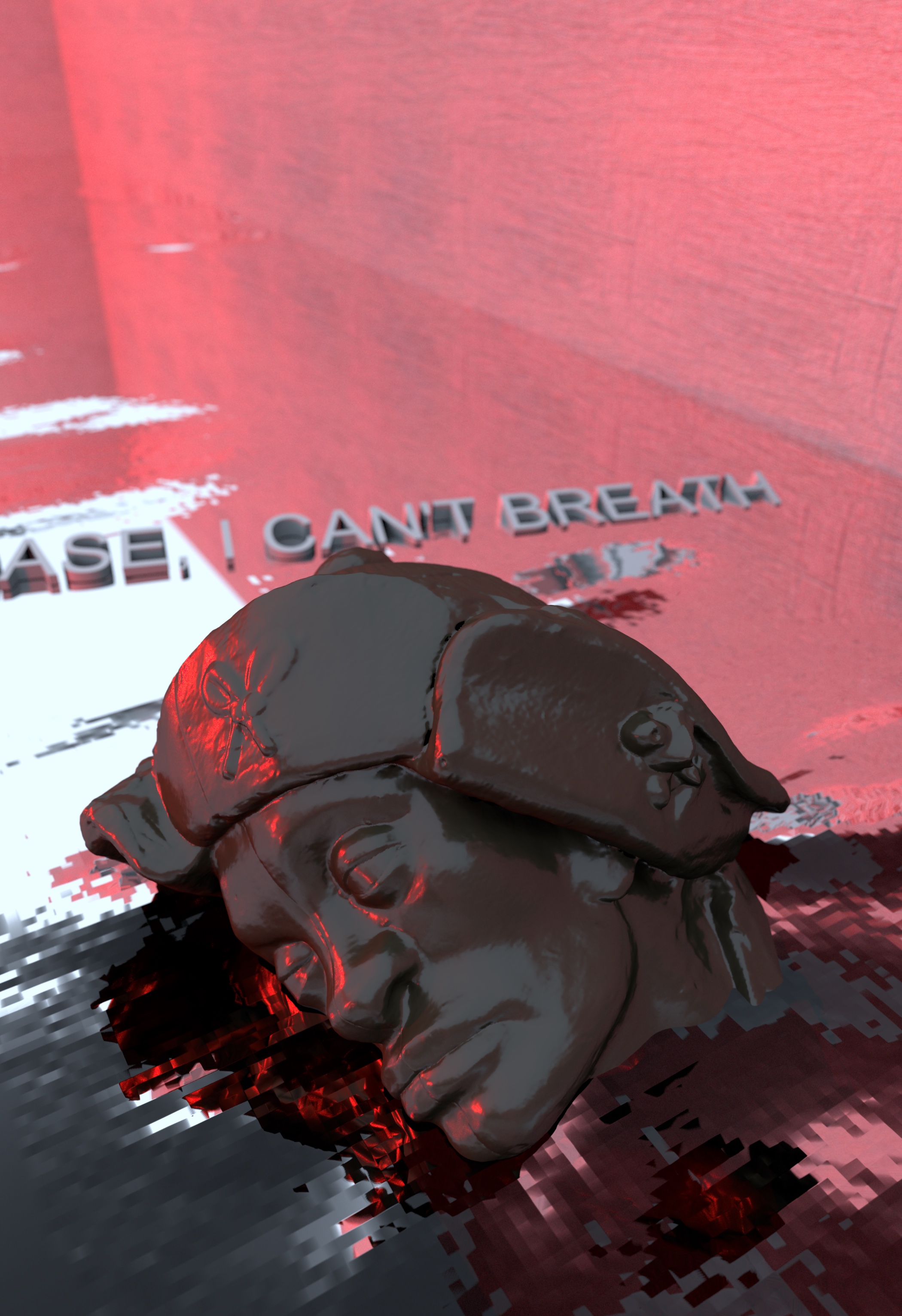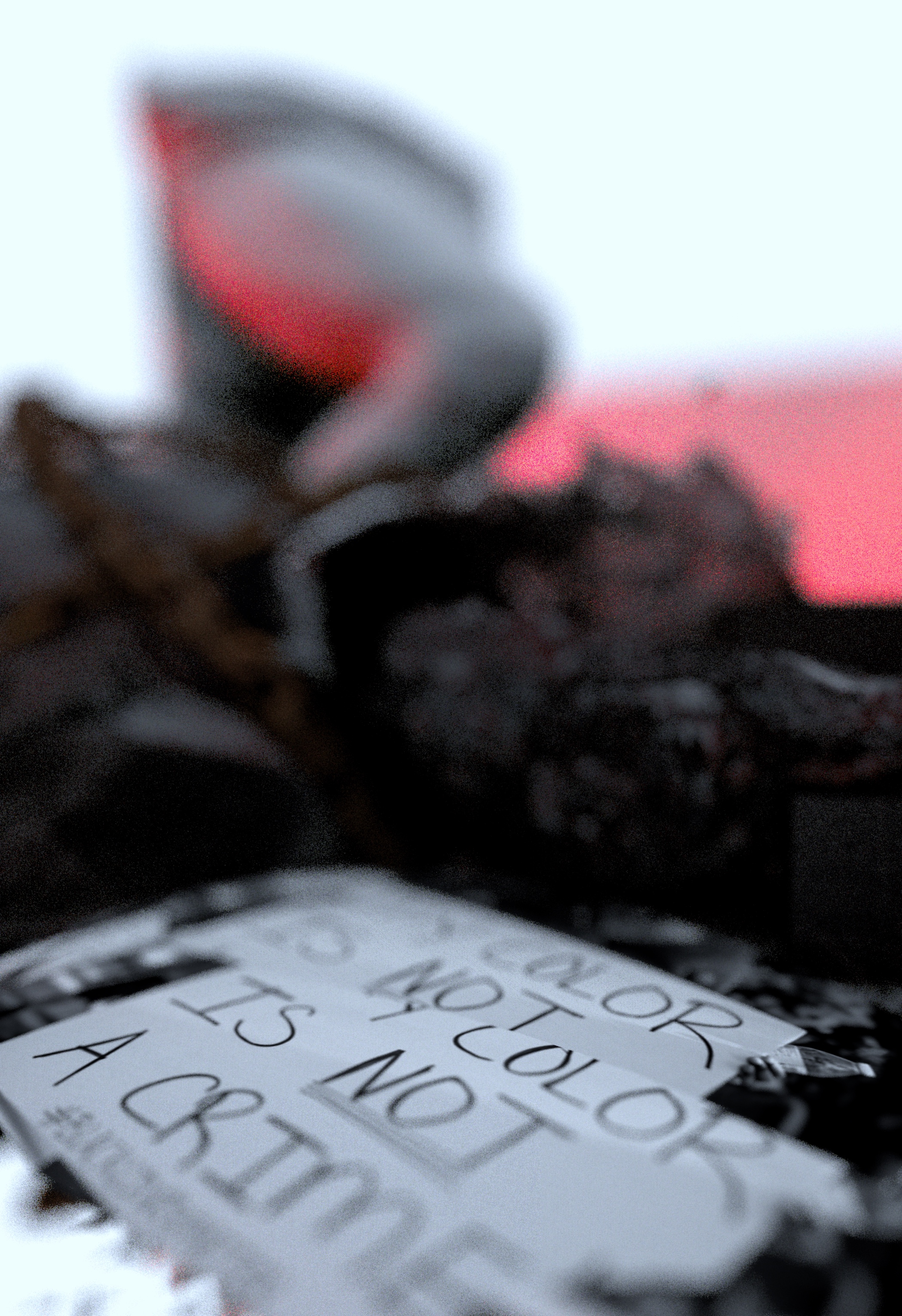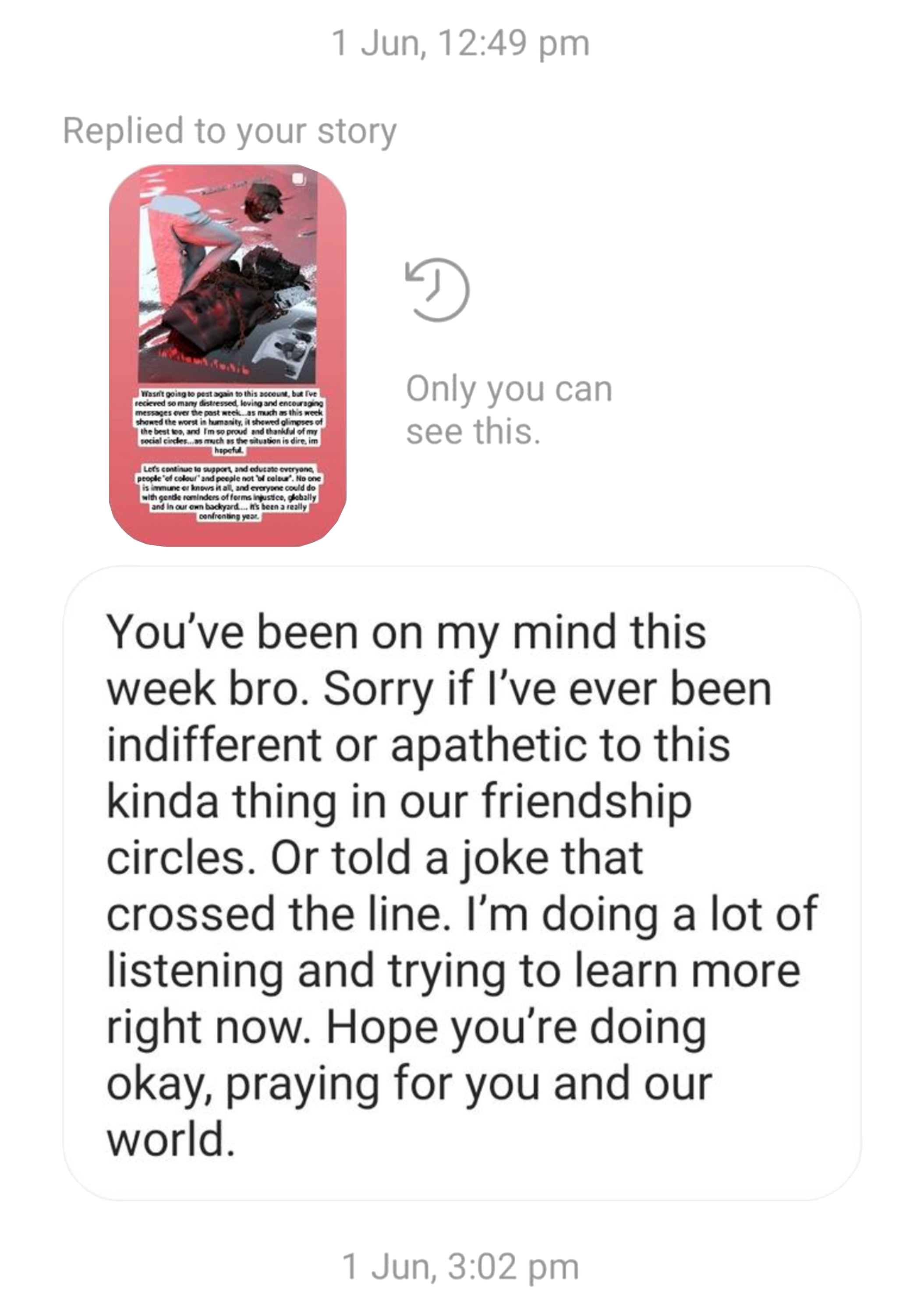Death and Metaphor
By Tope Adesina
The cataclysmic events of the last eight months have brought significant change. Events have catalysed a rapid re-interrogation of social values. This image has allowed me to somewhat capture what my own words could not at the time.
For me, it looks at historical typologies that capture the direct and potentially confused relationship between the oppressor and the marginalised, the signifier and the signified, the depicted and the forgotten.
As if foretold.
The morbid imagery depicts the murder of George Floyd. Through metaphor, it also references the past and struggle between cosmic order, chaos, and otherness. It consolidates a re-recorded past, a captured present, and a pre-recorded future with a distinct absence of shifts. Through elements of classicism and metaphor, it is ultimately an attempt to synthesise my own feelings towards loss, and a myriad of issues; particularly those of race and representation.




The images show a neo-gigantomachy of sorts, focusing on the un-armed torso of Clytius the Giant representing black bodies (alternatively Cleitus the Black) and Michelangelo’s rebellious slave –
representing the unprosecuted officer
(at the time).
I mention the origins of these elements not to push an interpretation, but to give context and to deepen the well of thinkable interpretations.
I mention the origins of these elements not to push an interpretation, but to give context and to deepen the well of thinkable interpretations.
Through Ruin, we either reconstruct, reiterate, or re-orient. The ruin prioritises, mostly it levels, but some fragments remain to highlight and narrate.
In a ruined state (and State) we must rebuild. To build from ruin, we first take stock of the rubble. We will check the foundations and we will gather the debris of torn down statues. Taking stock, mourning, and re-educating. All this, amongst this apocalyptic year, has seemingly brought a sense of rest, a tabula-rasa of sorts. It has questioned every value I had, challenged every assumption I carried, and queried the fabric of a society I’ve taken part in building.
Feeling buried beneath the rubble, like George Floyd we gasp “I cant breathe” only to be met with the response of the oppressor “stop talking, stop yelling, it takes a heck of a lot of oxygen to talk.” And so the giant falls, again and again.
Maybe this time it will be different.


︎︎︎
Note from the editor:
There is a profound sense of mourning in this piece by Tope Adesina. While the COVID-19 pandemic has lodged itself in our collective consciousness, there has been globally in the past six months, and the past six years, and the past six decades – a continuing and ongoing struggle against racism, and for black lives.
Out of all the clear demands and righteous anger, of the ongoing protests in America, it is strange that one element that has had particular potency among the right-wing commentariat is the attitude towards historical sculpture and monument – the removal of these figures of oppression by protestors has an unquestionable impact and in this context the sinking, ruined sculptures present in Adesina’s images speak volumes.
There is a clarity in these images, formed from the redeployment of classical sculpture and their ruin, the integration of foundational Western mythological canon, and the reinterpretation of this canon to act as a profound, elegiac polemic.“Maybe this time it will be different”
It must be.
